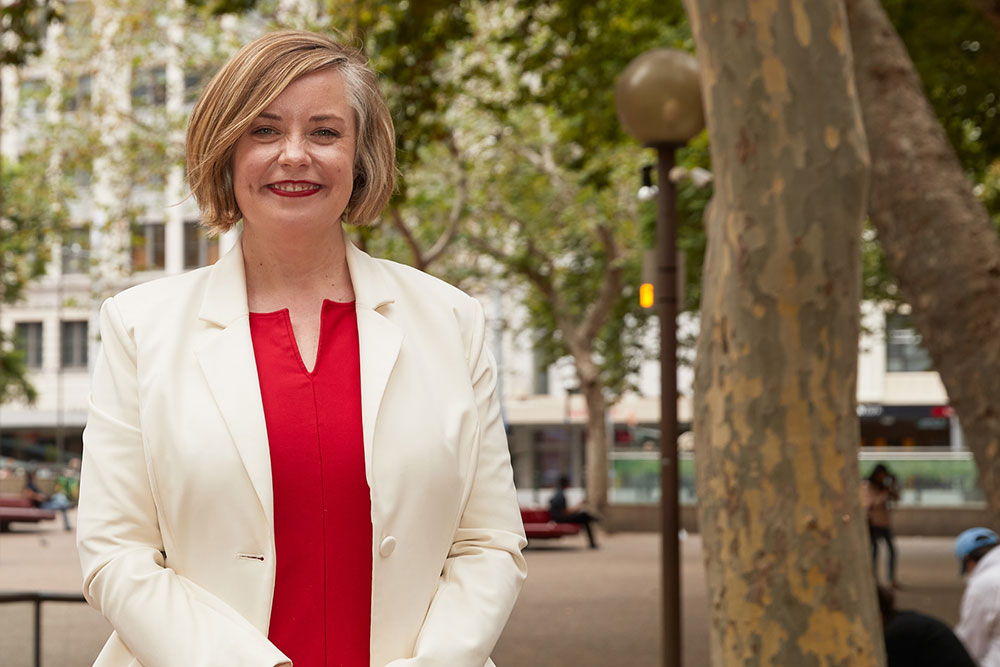
9 November 2021
Launch of the 2020/21 Annual Report
I’m delighted and proud to this week launch our 2020/21 Annual Report, my last to members as President of Local Government NSW.
When I came to office four years ago, LGNSW helped deliver $75 million in funding to support councils and our communities, but this figure has now grown to more than $8 billion, including disaster recovery and COVID-related funding. The power of one strong, united local government voice has never been so starkly illustrated, and I think the future of our councils and communities is in very good hands.
Some of that outstanding work was on show at LGNSW’s annual Local Government Awards last week: the RH Dougherty Awards, Leo Kelly Art and Culture Awards and Planning Awards. Every year I am so impressed with the high quality of submissions and this year was no different. My hearty congratulations to all involved, who illustrated not only the best in local government innovation but also the width and breadth of our involvement in the community.
View the winners’ list
I was pleased to host a meeting of NSW Premier Dominic Perrottet and North Coast and Hunter Region Mayors to discuss NSW’s emergence from the COVID pandemic. Vaccination rates, particularly among vulnerable communities, was high on the agenda, along with the need for a careful balancing act between protecting community health and boosting hard-hit regional tourism. The Premier also undertook to press the South Australian and Queensland premiers on their border closures, which are particularly damaging for communities in Broken Hill and the Tweed.
It was also great to catch up with other regional and rural mayors at the Country Mayors’ Association (CMA) Annual General Meeting last week, and to join them in calls for an end to State Government cost-shifting. Emergency services, external audit, Crown Land management, planning, companion animals, underground petroleum storage systems and COVID-19 Health Order compliance are just some of the areas in which councils are being asked to bear more and more of an already heavy financial burden, calculated at up to $7 billion state-wide over the last decade.
Win! Taskforce listens to councils on housing affordability in the regions
It was heartening to see a number of the findings in the NSW Government’s Regional Housing Taskforce Report aligned with much of our advocacy when it was released this week.
The Taskforce Report says the attribution of housing shortages to planning processes is overly simplistic, with key contributing factors identified as financial and taxation systems, population growth, demographic change and interest rates. As we’ve been advocating for years, the regions need greater NSW Government investment in enabling infrastructure such as roads, water and sewerage, with regional councils reporting limited capacity on their part to make up the gap.
The State Government is now considering the Report’s recommendations and is scheduled to respond by the end of the year.
Win! Model Code now allows remote attendance at meetings
The Office of Local Government has published a revised Model Code of Meeting Practice, which allows remote attendance at council and committee meetings, and at Board meetings for Joint Organisations and Country Councils.
The new provisions are non-mandatory, permitting some variation in practice between councils based on local circumstances.
These changes align with Resolution 121 of the 2020 LGNSW Annual Conference, following motions from Albury, Orange, Wagga Wagga and Waverley councils, which called on the NSW Government to permit attendance and participation at council meetings by audio-visual link.
Win! $150 million for remote roads upgrades
LGNSW welcomes the Federal Government’s announcement of a new $150 million Remote Roads Upgrade Pilot Program, which responds to our ongoing advocacy for funding to improve road safety outcomes.
The pilot program will target unsealed roads throughout remote Australia to improve safety with works including resurfacing, removing dangerous corners and managing vegetation.
BACK TO MAIN PAGE